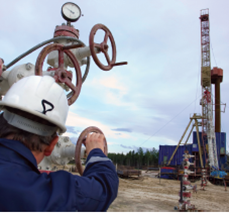When citizens have questions about hydraulic fracturing, where do they turn? In our recent webinar, Fracking: Advancing a Science-Informed Debate, myself and my colleague Andrew Rosenberg, the director of the Center for Science and Democracy at UCS, did our best to convey as much information as possible from our recent report, Toward an Evidence-based Fracking Debate.
We spent most of the webinar hour answering questions from UCS supporters, who had many. And their questions ranged from scientific to legal to political. Are the chemicals used tested for safety to the human, animal and plant communities? What is the probability of injected wastewater eventually leaking into aquifers? Are the risks worth the lessening of dependence on coal regarding climate change?
For those who couldn’t make the webinar or whose questions didn’t fit into the session, I wanted to take the time to answer some of the frequently asked questions we’ve gotten since our science and democracy forum and since the release of our report and toolkit.
“Is the idea of a moratorium reasonable, or is enough information out there to judge whether fracking is currently safe?” –Mark H.
There are many real risks associated with unconventional oil and gas development and science can inform us about those risks. Citizens faced with making decisions about such development in their communities deserve to have full access to reliable information about the risks and benefits involved. What we are seeing now is that communities don’t have that opportunity. Information is hidden, suppressed, or spun in ways that inhibit citizens from making those informed decisions. In this environment, it is reasonable for communities to enact a moratorium until they feel they have sufficient information and sufficient preparedness to decide if and how they want oil and gas development to occur in their communities or not.
“Since air pollution travels, how can safety risks only be evaluated on a community level?” –Sabrina K.
This question of the appropriate scale for risk assessment is a complex one, and not just for air pollution. Some risks associated with unconventional oil and gas development will affect local communities most directly. This is perhaps most apparent for socioeconomic impacts. Other impacts, such as air quality and water quality, may be more regional in terms of the primary scale of concern. At still bigger levels are effects such as climate change-related risks, which should be evaluated at national and international scales. To fully assess the risks associated with fracking and how those risks will be distributed, we need assessment at all levels. This is why we also need stronger governance and oversight of industry in order to effectively manage oil and gas development.
“Are industry or environmental groups spreading misinformation about fracking?” “Do the Gasland films accurately represent the science?”
In a high-stakes debate like fracking different stakeholders play different roles. They can help citizens to see the different factors to consider in the debate. Groups on all sides of the debate sometimes utilize misinformation to sway public and decision maker opinions. And it is important to remember this misinformation comes in varying forms, including half-truths, misleading phrases or images, distortions of numbers and statistics, omissions of key points, misrepresentations of research, and quotes taken out of context. To aid citizens in navigating this noisy information landscape, UCS has developed a fracking toolkit, which includes information on how to find reliable sources and the critical questions that citizens should ask when faced with decisions around oil and gas development in their community.

Greater transparency in industry activities and government decision making around oil and gas development is needed. In our recent report, Toward an Evidence-based Fracking Debate, we outline the specific reforms needed to lead us in this direction.
“Are you aware of the use of depleted uranium in hydraulic fracturing?” –Janet D.
We have heard forms of this question several times now so I wanted to take time here to acknowledge it. This is a growing concern for some, but it is unclear the level of risk that it presents. It is true that Halliburton and other companies have patents for perforation guns (tools used to punch holes in the horizontal segment of the well) that include the potential use of DU; however, having patents for use of material does not necessarily mean that the materials are being used in practice. Companies may list many materials in a patent in order to reserve the right to potentially use them in the future. One would need to confirm with companies themselves to find out what materials are actually being used. We do know that some hazardous materials are used in drilling tools, as the recent misplacement of a radioactive rod demonstrates. This is a prime example of why we need to demand greater transparency from the industry and greater oversight of hydraulic fracturing more broadly.
“How can we as scientists more effectively communicate to the public and decision makers the concerns and risks of hydraulic fracturing?” –James M.
Scientists, engineers, and other technical experts can play an important role in helping the public and decision makers understand the science that informs the public discussion on fracking. Assessment of the risks and benefits of oil and gas development, for example, may be complex and technical in nature, and community groups, policy makers, and individual citizens may be looking for technical experts to help them navigate and take action on this information. If you are interested in lending your expertise to a local policy discussion, find the relevant issues, policy proposals, and actors involved (the fracking informational toolkit can help you get started). In addition, one of the goals of the UCS Science Network is to connect scientists with community groups and decision makers seeking expertise. If you haven’t already, join the UCS Science Network to hear about opportunities to engage in policy discussions.
